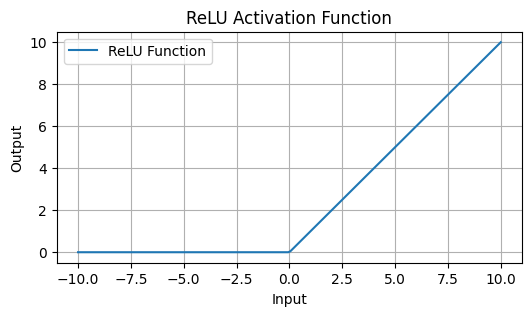ReLU

Rectified Linear Unit (ReLU) is the most common activation function in deep learning: it converts negative values to 0. ReLU is one of the simplest conceivable ways to add non-linearity to a neural network. And it works!
Code:
import numpy as np
def relu(x):
return np.maximum(0, x)
The paper Rectified Linear Units Improve Restricted Boltzmann Machines is commonly cited as the first usage of the ReLU activation function, though the first usage of the function dates back to the 1975 paper Cognitron: A self-organizing multilayered neural network
ReLU helped to overcome the vanishing gradient problem prevalent in traditional activation functions like Sigmoid Function or tanh. In these functions, gradients can become extremely small, stopping the network from learning further.
However, since the function outputs zero for any negative input, neurons can sometimes become inactive and stop contributing to the learning process, referred to as "dying ReLU", especially if the network is not properly initialized or the learning rate is too high.
Variations like Leaky ReLU and Parametric ReLU mitigate this by replacing 0 with a small value when the unit is inactive, providing a way to keep the neurons alive during the training process.

Recommended Reading
Deep Learning for Coders with Fastai and PyTorch: AI Applications Without a PhD

To learn more about loss functions and the fundamentals of neural networks in general, I recommend Deep Learning for Coders with Fastai and PyTorch: AI Applications Without a PhD—an approachable yet complete top-down guide to Deep Learning.